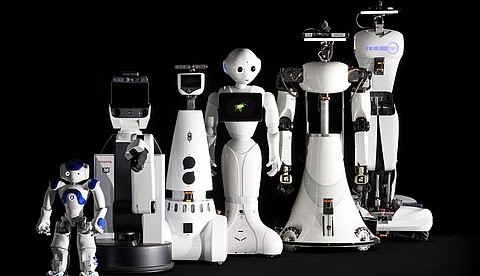Industrial robots become more flexible thanks to soccer and care robots
on

Dealing with unexpected events – for the soccer and care robots of the Technical University Eindhoven in the Netherlands is nearly a given: indeed, you never can tell what an opponent or your client will do next. Industrial robots too, can benefit from greater independence and autonomy. The university will therefore start a research project with industry partners to give mobile industrial robots an open world view, with as little as possible pre-defined. With this it is important that robots learn to understand what they see, so that they can better deal with surprises.
Cooperation
The High Tech Systems Center of the TU/e, the companies Lely Industries, Vanderlande Industries, ExRobotics (ImProvia), Diversey and Rademaker, supported with funding from Topsector HTSM (TKI allowance) together invest 1.5 million euro in the project that will last for four years. The TU/e will appoint four new PhD students, who will be assisted by tens of students. The project has the name FAST: new Frontiers in Autonomous Systems Technology.
The project has to result in robots that are more flexible in dealing with their environment in which situations change. This has all kinds of advantages. For example, the environment does not need to be demarcated. There is no need for specific zones or reference points. The development time for robots will be shortened too.
World model
In order to realise this, the parties together will make a 'semantic world model' for robots. Semantic means that a robot can give meaning to its observations, recognise situations and objects, which makes it possible for it to react more appropriately. An example: being able to distinguish between a pallet with goods, a group of people or a forklift truck results in a wide range of options for the robot to react to. They also have to actively seek out information for themselves in order to judge a situation better, and finally to better execute its task. For example, by creating an image of the situation itself through multiple sensors, from obtaining information from the Internet of Things, or by asking assistance from a person
With this new information the robot fills in its world view. The robots therefore become self learning, so that they can handle the same situation easier the next time, or know how to avoid it. They will also operate more among and with people. Within the semantic world model the interaction with people is therefore an important part.


Discussion (0 comments)